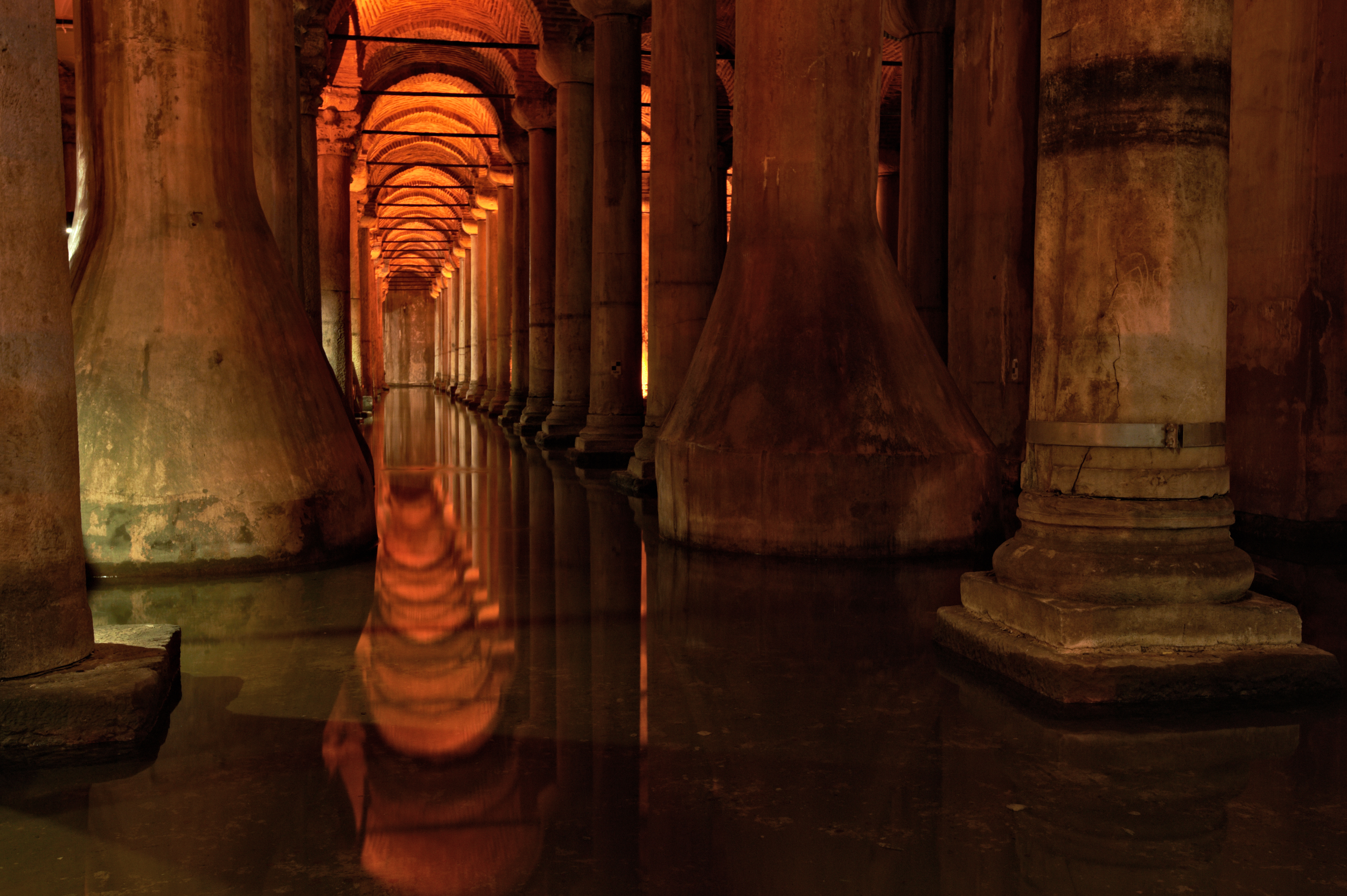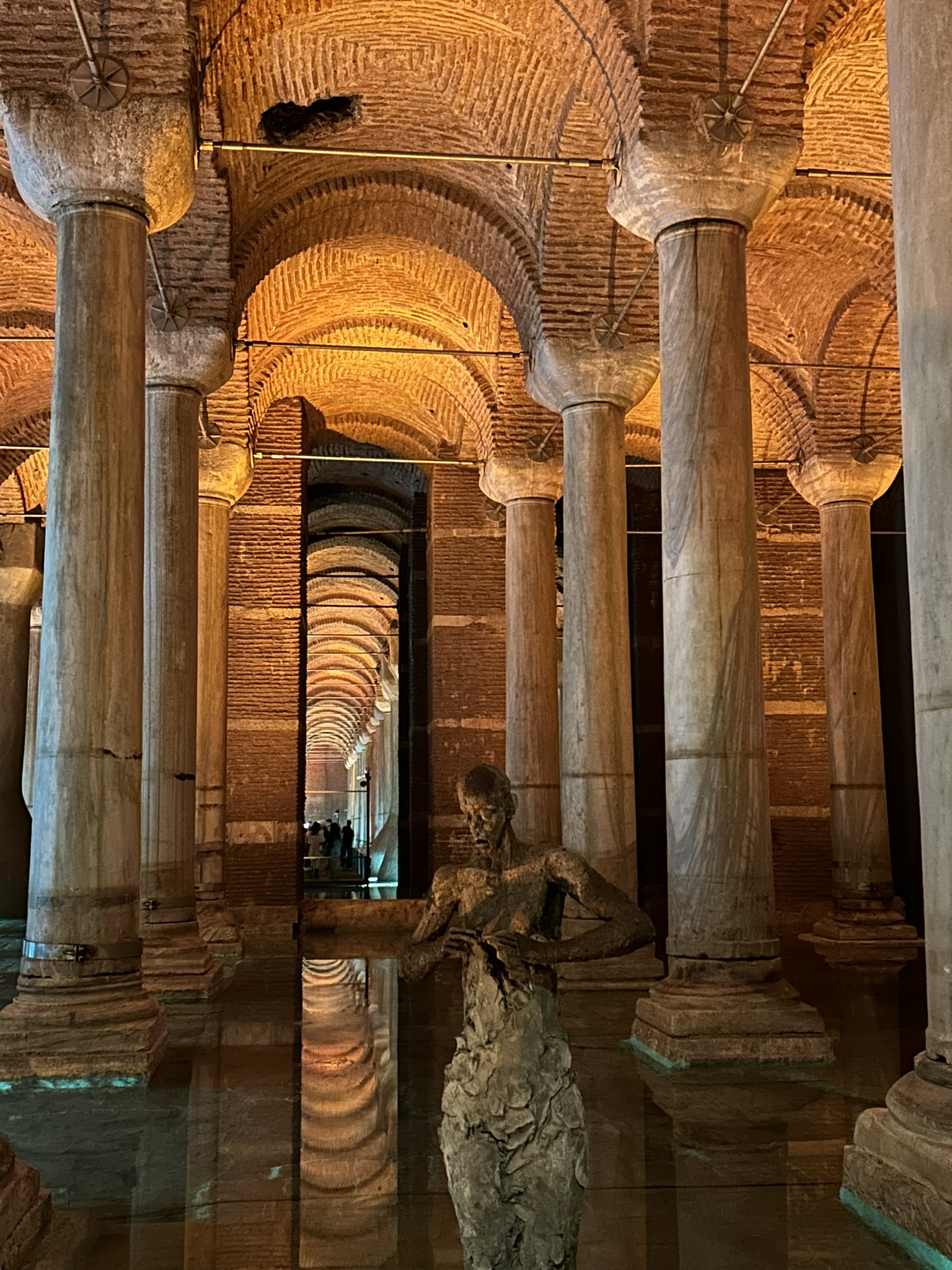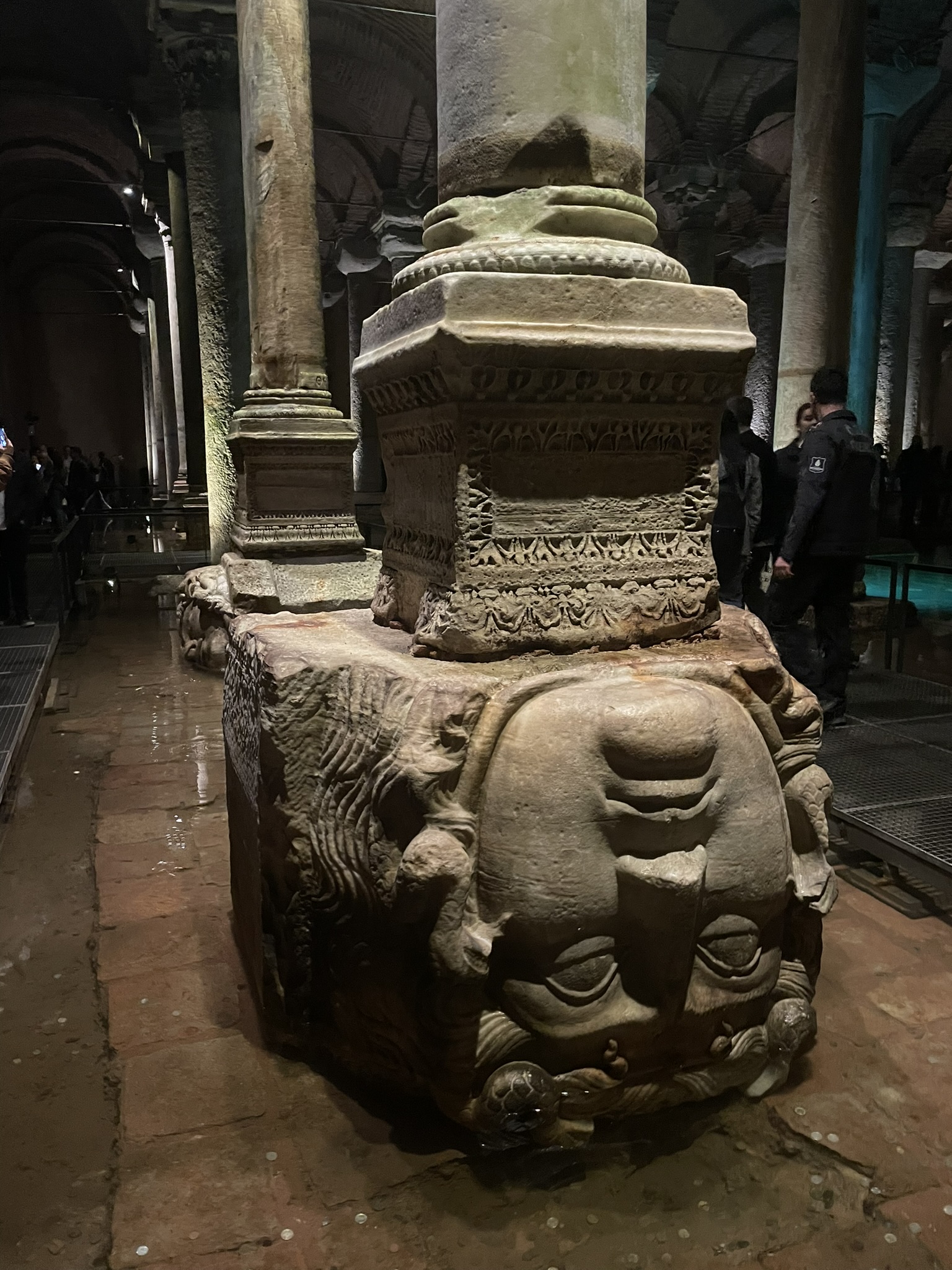Basilica Cistern: Exploring centuries of aqueducts, cisterns and innovation
Although Istanbul's transportation networks and excellent defense system make it highly suitable for trade, its drinking water resources were quite inadequate during ancient times

EXCLUSIVE BY KORAY ERDOGAN — Istanbul is surrounded by the sea on three sides. Its transportation networks and excellent defense system make it highly suitable for trade. However, its drinking water resources were quite inadequate. The Roman emperor Hadrian (117-138 A.D.) is credited with building the first water system in the city.
When Constantine I (306-337 A.D.) declared Byzantion the capital of the Eastern Roman Empire, the city's population and construction led to the construction of the most extensive hydraulic engineering system in the ancient world – only a tiny part of which we see today in the Bozdogan (Valens) Arch.
Probably begun during the reign of Constantius II (337-361 A.D.), even before Emperor Valens (364-378 A.D.), the system supplied the city with water from the Ergene, Binkilic, Karamandere and Alibey streams in Thrace through arches and canals stretching 592 kilometers (367 miles).
The city's other water supply sources were Halkali and Belgrade Forests. The water that reached the city was collected in open-and-closed cisterns on the high ground of the Surici region or distributed directly to government institutions, baths and fountains through terracotta and lead pipes placed in canals.
When Constantinople was conquered in 1453, one of Sultan Mehmed II's (1444-1446 A.D.; 1451-1481 A.D.) first tasks was to repair the water supply system, especially in Halkali.
New lines were constructed during this period, adding to the water system left over from the Byzantine Empire. In the 16th century, Mimar Sinan designed the Kirkcesme facilities that brought water from the Belgrade Forest to the city.
The location of these water lines close to the city also facilitated defense against attacks.
In time, because of the increasing need in the Kasimpasa, Galata, Beyoglu, Findikli and Besiktas regions, Sultan Abdulhamid I (1774-1789 A.D.) had the transmission line from Bahcekoy to Taksim built.
In the late 19th century, the French-based Dersaadet Joint Stock Water Company founded the initiative of Sultan Abdulhamid II (1876-1909 A.D.), equipped the Terkos water line with modern technology and began supplying pressurized water to the city through a pumping station for the first time.
The administration acquired the company in 1932 and transferred its activities to the Istanbul Waterworks Administration.

The largest of the closed cisterns
Large water reservoirs, such as the Basilica Cistern, were built to supply water directly to the Byzantine Great Palace area. In the 6th century, the Eastern Roman Emperor Iustinianus built the largest of the covered cisterns in the monumental center of the city to provide water to the administrative center, the Grand Palace, and the surrounding buildings.
According to written sources, the water to the Basilica Cistern comes from Hadrian's transmission line.
The cistern, which covers an area of approximately 10,000 square meters, is 140 meters in length and 65 meters in height and can store 80,000 cubic meters of water. The vaults are supported by 336 marble columns.

The column with a stylized tree trunk, known as the "column of tears," was transported from another building in the city and repurposed in the cistern. Both architectural elements are considered dating to the 4th century A.D.
Petrus Gyllius, who came to the city in the 16th century to research the ancient topography of Istanbul, examined the structure, which was repaired and continued to be used during the Ottoman period, and reported that it was a common practice for Istanbulites living in the houses above the structure to draw water with buckets from the wells opened to the cistern.
"They draw water with buckets, row in the cistern, and light it with oil lamps and fish. Air and light seeped into the cistern from the wells, and the fish swam in the light,” Peter Gyllius said.
The architect Kayserili Mehmet repaired the Basilica Cistern Aga for the first time during Sultan Ahmet III's reign. For the second time during Sultan Abdulhamid II's reign, it continued to be repaired in the following years.
In 1955-1960, its nine columns, which were at risk of breaking, were covered with a thick layer of concrete. During the extensive repair and cleaning works the Istanbul Metropolitan Municipality carried out between 1985 and 1987, Medusa heads, the most essential symbol of Basilica, were discovered.
The Medusa heads, used as column bases, are upside down on the west side of the building and horizontally on the east side.
After the restoration, the magnificent structure was opened to visitors as a museum by the Istanbul Metropolitan Municipality in 1987, and various national and international events were hosted at the museum.
Source: Newsroom









